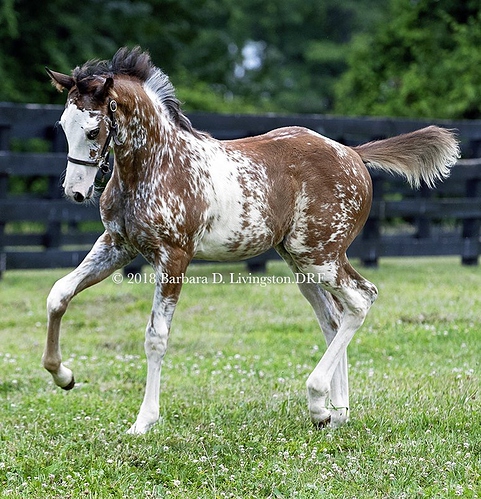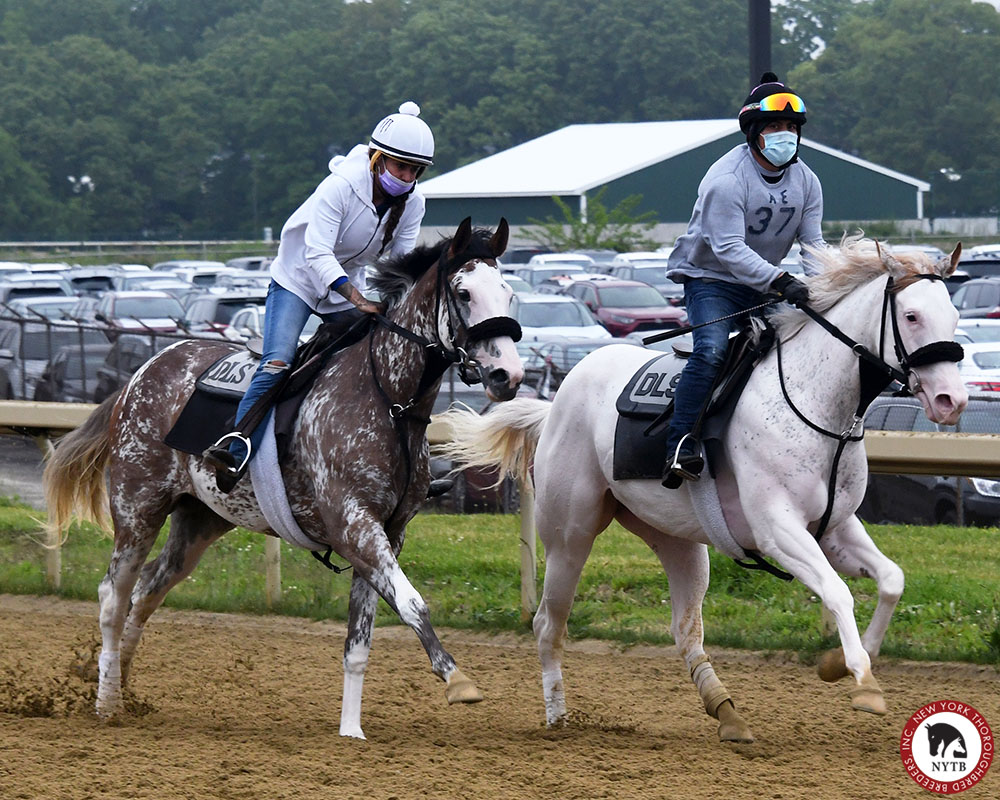The thing about White is that various versions present differently. Some of them absolutely do resemble Frame, though usually, IME, you can tell the difference by how much leg white there is. For example:
Let’s say you’ve got a Frame with Sabino1, and the SB has put leg white on. Frame doesn’t put white on legs, at least not below hocks/knees. So let’s say you’ve got a kind of weird whiteness around the body, maybe Frame, maybe not, and you have 2 front white legs, 1 white hind, and the other hind has this really dark patch kind of in the middle of the white. Be highly suspicious of Frame, which does noootttt like white legs. I look at it as Frame trying to push white off the legs. I’ll see if I can find a pic of that, because it’s not what you see in that last picture, where that RF has dark color on the inside. That’s just a function of the splotchy spattered nature of this presentation (which is very, very common in the W22)
Many Frames can look like a White in the body, very splotchy and jagged, but if you see that much white on the body, and no white on the legs (or very little), think Frame instead of White.
There are some decent AA racehorses (not Grade 1, they aren’t that caliber, but IIRC a few have made some decent money at lower levels), and there are some other W lines that produce pretty good ones, especially over in Japan. That line though tends to make them all white, not the cool spattered patterns.








